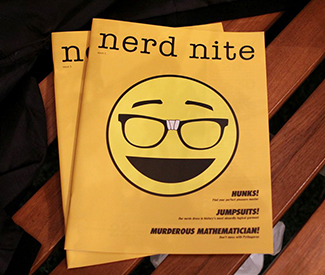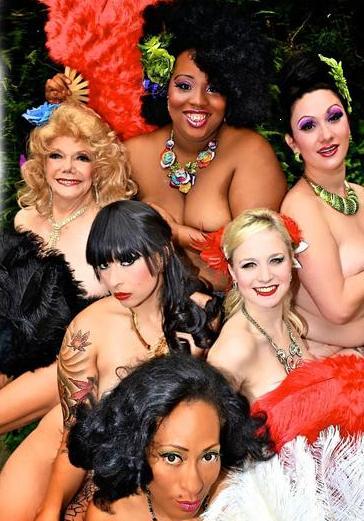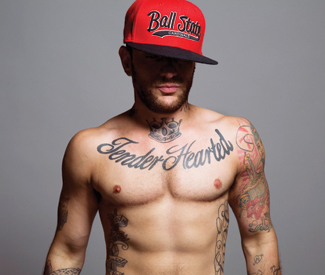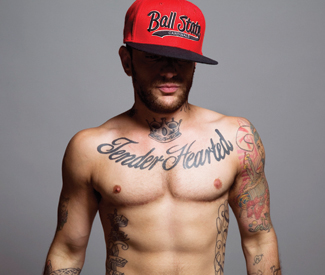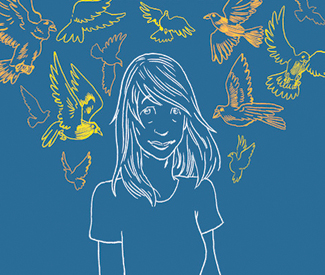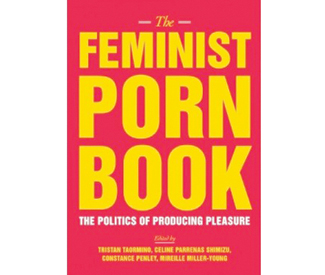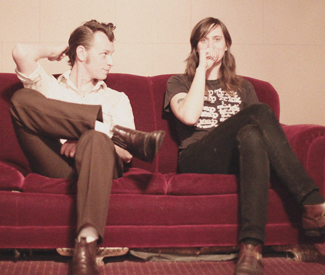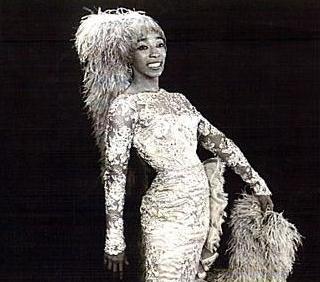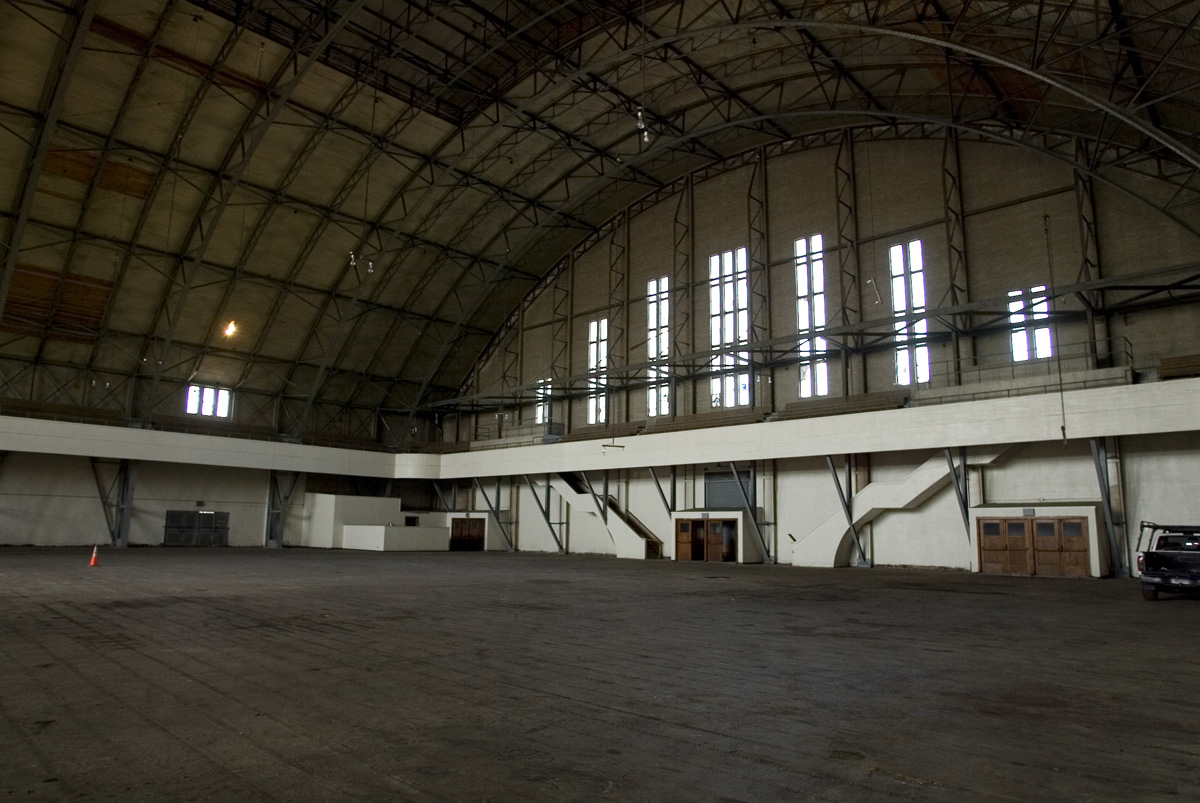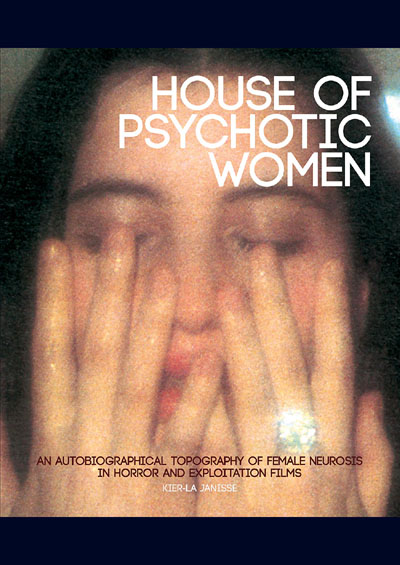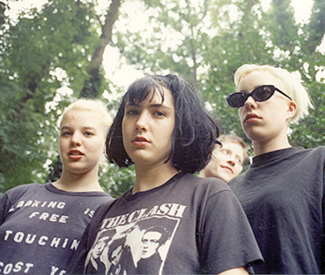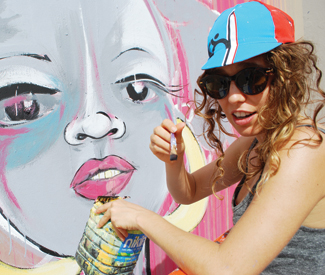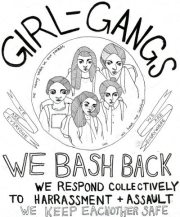Strap on that rainbow jetpack — there’s a heckuva lot of stuff going down at Pride. Here are our pinkiest, proudest picks.
ONGOING
Faetopia 2286 Market, SF. www.faetopia.com. Through Fri/28, noon-midnight, (event times vary), $10 suggested donation. What’s a radical queer to do in this season of commercialized sexual identity? Fill it with blithe faggotry and faerie magick. The crew behind Faetopia is organizing nights of queer cinema, ecology and history classes, drag musicals, skillshares, and much more — do drop in.
Frameline37 Various venues, SF and Berk; www.frameline.org. Most shows $12. Wed/26-Sun/30. There’s still much to see at the San Francisco International LGBT Film Festival, including the ever-popular “Fun in Girls Shorts” and “Fun in Boys Shorts” short-film programs, plus closing-night high-school comedy G.B.F.
“From Heather’s Mommies to Tango’s Daddies” San Francisco Public Library Main Branch, 100 Larkin, SF; through August 1 during library hours, free, www.sfpl.org. This exhibit traces “the evolution of family affirming literature” through Randall Tarpey-Schwed’s collection of more than 70 same-sex family friendly children’s books published since the 1970s. Also, on the main branch’s second floor, in the Fisher Children’s Collection, the “10,000 Dresses” highlights the first transgender book written for children.
“I Am UndocuQueer!” Galería de la Raza, 2857 24th St, SF; www.galeriadelaraza.org. Through July 1. The latest installment of the gallery’s Digital Mural Project features the work of undocumented queer activist Julio Salgado. His billboard aims to illuminate the intersection between — and foster open dialogue between — the immigrant and LGBT communities.
National Queer Arts Festival Various venues, SF; queerculturalcenter.org/NQAF. The 16th annual performance fest wraps up with Terry Baum’s HICK, a love story about Eleanor Roosevelt (Wed/26-Thu/27 at the Garage), and multi-media performance Girl Talk, with Gina de Vries, Elena Rose, and Julia Serano (Thu/27, African American Arts and Cultural Center).
WEDNESDAY 26
“Dream Queens Revue Pride Show” Aunt Charlie’s Lounge, 133 Turk, SF; www.dreamqueensrevue.com. 9:30-11:30pm, free. Eye-popping Pride drag with experts Collette LeGrand, Diva LaFever, Sophilya Leggz, and more.
“The Guardian and Hard French Present: Pullin’ Pork for Pride” Pilsner Inn, 225 Church, SF; www.sfbg.com. 6-9pm, free. Gather ’round for the ninth annual incarnation of this happy hour tradition, with host Lil Miss Hot Mess and performances by Dick Van Dick, Tara Wrist, and Rotimi Agbabiaka, plus Hard French DJs Carnita and Brown Amy. And, of course … pulled pork sandwiches, with options for vegetarians this time! Plus: BYO dark-colored t-shirt for Bradley Manning screen printing.
“Harvey Milk 2013” Nourse Theatre, 201-299 Hayes, SF; www.sfgmc.org. Wed/26-Fri/28, 8pm. $25-60. The peppy and game San Francisco Gay Men’s Chorus presents its 35th anniversary celebration concert, featuring the world premiere of Andrew Lippa’s new choral work I Am Harvey Milk.
“OH! Pride” Powerhouse, 1347 Folsom, SF; 10pm-2am, $5 benefitting AIDS Emergency Fund Dandy young gentlemen of perversion gather monthly at the Powerhouse to twirl their mustaches, bare their chests, and dance hotly to magical sex tunes.
“What?! Pride” Lookout, 3600 16th St., SF. 7pm-10pm, free. Fun dance tunes and good times with a relaxed crowd of cuties, featuring local composer Samuelroy and friends.
THURSDAY 27
Camp Wild Beaver Lexington Club, 3464 19th St., SF; www.lexingtonclub.com. 9pm, free. The sexy Lex dyke bar kicks off a wild weekend of events with this camp-themed gem, featuring DJs Pony Mane and Zoccocks, plus campfire go-gos, lumberjackin’ hotties, and more.
Folsom Pride Public Works, 161 Erie, SF; www.publicsf.com. 9pm-2am, $25 advance. The naughty team behind Folsom Street Fair and Up Your Alley bring in electro-hotties Bright Light Bright Light and Slow Knights for a raucous dance party (and probably more than a little yummy leather cruising).
“Love: A Deeper Pride” Abada Capoeira Center, 3221 22nd St., SF; loveandpride.brownpapertickets.com. 10 p.m., $10 advance. A vogueing exravaganza brought to you by Vogue and Tone, The A, Miss Beth, Abada Capoeira, and Sandra Navarro, plus music by Gehno Aviance and Go Bang! DJs. Work the runway, mop the floor.
Mykki Blanco Mezzanine, 444 Jessie, SF; www.mezzaninesf.com. Multi-gendered, aggressively experimental rap from the artist everyone’s talking about? Yes.
Pepperspray SF Eagle, 398 12th St., SF; www.sf-eagle.com. 9pm-midnite, $10. If you weren’t hip to this actually legendary all-drag queen rock band when the first time around (in the early 00s), here’s your chance to EXPERIENCE THE MAGIC. The fearsome foursome will be heshing their wigs off for the first time in a decade, supported like pantyhose by She-L-O (Electric Light Orchestra tribute band!). Pepperspray hits the stage at 10 sharp — no drag time please!
“Pride NightLife” California Academy of Sciences, 55 Music Concourse, Golden Gate Park, SF; www.calacademy.org. 6-10pm, $12. This year’s incarnation of the popular annual science museum event includes a “transpecies” costume contest with drag stars Glamamore, Heklina, Juanita More, and Peaches Christ; talks by reps from the Center for Sex and Culture’; music from DJs Carnita and Brown Amy of Hard French vs. DJs Pink Lightning and Rapid Fire of Stay Gold. And more. Seriously, what other Pride event will teach you about sea slugs?
The Tubesteak Connection Aunt Charlie’s, 133 turk, SF; www.auntcharlieslounge.com. 10pm-2am, $5. A quintessential gay SF experience, DJ Bus Station John’s weekly club transports us back to the good ol’ cruisy bathhouse days with soulful disco and Hi-NRG tunes, plus some special Pride surprises. No cell phones, please!
“Vintage Queer San Francisco” Oddball Films, 275 Capp, SF; www.oddballfilms.com, 8pm, $10. Amazing film clips and fascinating video snippets of queer life in Oz over the last century.
FRIDAY 28
Bearracuda Public Works, 161 Erie, SF; www.bearracuda.com. 9pm-3am, $12 advance. Are you big? Fat? Hairy? Hot? Male-identified? If you answered “yes” to at least two of those, this is where you need to be. Honey Soundsystem DJs guest. Otters welcome.
Mr. Monarch, 101 Sixth St., SF; www.monarchsf.com. 9pm-late, $15. Borrow a mustache — or hey, grow your own — for this great party put on by Fag Fridays and Beatbox Events. (Last year’s was a real hoot.) With quality house music from DJs David Harness and Jeno plus cute boys.
“Some Thing is Really Gay” The Stud, 399 Ninth St. SF; www.studsf.com. 10pm-4am, $8. Watch in awe as the city’s most artistically-inclined drag performers deconstruct, reconstruct, and just plain strut with Pride’s many goofy tropes. Oh, and much dancing and carrying on to fun music.
Trans March Dolores Park, Dolores at 19th, SF; www.transmarch.org. Speakers and music 3pm; march (to Civic Center) 6pm, free. The 10th annual Trans March aims to inspire “all trans and gender non-conforming people to realize a world where we are safe, loved, and empowered.” Check out the event’s website for info on post-march parties for youth and adults.
“Unofficial: Trans March After Party” Elbo Room, 647 Valencia, SF; www.elbo.com. 10pm-2am, $10. For the fourth year in a row, Amos Mac and Rocco Katastrophe of the world’s hottest FTM magazine Original Plumbing get wild with you after the march. With DJs Rapid Fire and Average Joe and a boatload of hot trans go-gos.
SATURDAY 29
“Bondage A Go Go: Pervert’s Pride” Cat Club, 1190 Folsom, SF; www.sfcatclub.com. 9:30pm, $10-$20. Polymorphous pansexual explorers and friends of all genders converge for this titillating night of fun and fur cuffs.
“Cockblock: The Seventh Annual Dyke March After-Party” Rickshaw Stop, 155 Fell, SF; www.cockblocksf.com DJ Nuxx and friends’ Cockblock party is always good times for hot girls on the prowl to swirly electro- and hip-pop tunes.
“Dark Room: Pink Party After-Party” Cafe Du Nord, 2170 Market, SF; www.facebook.com/DarkRoomSF. $10 before 11 $15 after. A night of dark electro, industrial, freestyle and more. Guest DJ Heklina and Believe on stage live, with Host Lady Bear and her dark dolls performing, and the debut of Daddies Plastik’s new single, “Google Google Apps Apps.”
Dyke March Dolores Park, Dolores at 19th St, SF; www.thedykemarch.org. Music at noon; march at 6pm, free. This year’s theme is “Dykepocalypse: Our Feminist Awakening,” about which organizers say: “We recognize that there is an opportunity to educate others on the roots of feminism and collectively embrace our strength as we step into our own power.” To which we say: Amen!
“House of Babes SF Dyke March After Party” Public Works, 151 Erie, SF; www.thehouseofbabes.com. 7pm, $15-30. If you thought the Dyke March was a workout, check this out: eight hours of DJs (Rapid Fire and Pink Lightning of Stay Gold; Da Vo and Boyfriend of Swagger Like Us; Jenna Riot and Andre of Fix Yr Hair; and more!), plus live performances by local queer hip-hop superstars Double Duchess, Micahtron, and others. Watch your hydration.
The Juan Maclean and Kim Ann Foxman Monarch, 101 Sixth St., SF; www.monarchsf.com. 9pm, $10-$20. This most excellent NYC twosome are at the forefront of the old-school late ’80s house sound revival, full of melodic hooks and catchy bass lines. Dare you not to dance.
Pink Mammoth Block Party Mighty, 119 Utah, SF; www.pinkmammoth.org. Noon-4am, $25-$45. Not to be confused with the Pink Party (see below) this all-day and all-night outdoor rager from the beloved Burning Man crew will get push your funky house and techno buttons. With, like, 1000 DJs, including Audiofly and Marques Wyatt.
Pink Saturday Celebration Castro and Market Streets, SF; www.thesisters.org. 5pm-10pm, free (donation requested). The Sisters of Perpetual Indulgence host their annual blast, filling the castro with music, cuties, and rainbow rings a-plenty.
Pink Triangle installation and commemoration Twin Peaks Vista Overlook, SF. www.thepinktriangle.com. Installation, 7am; ceremony, 10:30am, free. Volunteers needed to help install this important, instantly-recognizable Pride symbol; help out and get donuts, coffee, and a Pink Triangle t-shirt. (Also needed: volunteers to help take it down, Sun/30, 5-7pm).
Pride in Style Sui Generis 2231 Market, SF. Facebook invite. Noon-4pm, free. A fantastic — annual stylish — Pride welcome gathering in the much-loved mens’ clothing store. With DJs Jason Kendig and Two Dudes in Love, plus all the handsome gentlemen you want to meet.
SF Pre-Parade Pride Celebration Civic Center, SF; www.sfpride.org. Free. The 43rd annual Pride celebration is themed “Embrace, Encourage, Empower.” You can em-party down with multiple music stages — including 23 community-run stages and venues — exhibitor and food booths, and much more.
SUNDAY 30
Big Freedia Public Works, 161 Erie, SF; www.publicsf.com. 6:30pm-1am, $20-$30 All hail the queen diva of Nola bounce as she pops your sissy booty and works it down the middle. With rapper Lady Tragik, filthy club sensation Brooke Candy, and — best of all — Motown’s king of booty bass, DJ Assault. Nice one.
The Cinch Saloon Turns 40! Cinch Saloon, 1723 Polk, SF; www.cinchsf.com. 4pm-10pm, free. Awww, spend some quality time with the beloved (and only remaining) Polk Street gay bar, as a slew of only-in-SF drag personalities pays tribute all day long.
Drippin’ and Droppin’ Poolside Pride Party Phoenix Hotel, 601 Eddy, SF; drippin.eventbrite.com. noon-7pm, $10-$20. All the soulful house lovers will be soaking up the sunshine(?) and good vibes(!) as two of SF’s legendary DJs, David Harness and Ruben Mancias, reunite for this lovely affair.
“Hard French Hearts Los Homos Pride 2013” Roccapulco, 3140 Mission, SF; hardfrenchpride2013.eventbrite.com. 4-11pm, $20-65. Don’t get soft: SF’s queer soul party tickles your lips and dives right in at this enlarged version of its annual queerific celebration. With DJs Carnita and Brown Amy, the Hard French Jiggalicious Drag Babes, and live performances by THEESatisfation, Magic Mouth, Midtown Social, and more. 2 cute 2 miss.
Honey Soundsystem Extended Pride Edition Holy Cow, 1535 Folsom, SF; www.honeysoundsystem.com. 10pm-4am, $5 before 11pm, $10 after. The best gay weekly underground techno party in the city goes long for your enjoyment, with sharp-eared residents Josh Cheon, Jason Kendig, Robot Hustle, and P-Play handling the big decks.
Juanita More Pride Party Jones, 620 Jones, SF; www.juanitamore.com. noon-midnight, $35. An absolute Pride party must, drag goddess Juanita’s huge affair is sold out online, but there will be 100 tickets at the door — line up early to experience a huge art installation by Desi Santiago, DJs Severino of Horse Meat Disco, Kim Ann Foxman, and more, the Cougar Cadet drum troupe, and acres of glamour and debauchery. Benefitting OutLoud queer youth radio.
Magda Monarch, 101 Sixth St., SF; www.monarchsf.com. 9pm-late, $20. The Detroit-via-Berlin ace has already conquered the international underground techno scene. Her more introspective, soulful recent sounds will perfectly dance you out of Pride.
Nina Sky Mezzanine, 444 Jessie, SF. www.mezzaninesf.com, 8pm-2am, $15 advance. Queens-bred, Puerto Rican descended sisters Nicole and Natalie are kind of the Tegan and Sara of catchy R&B with reggaeton roots. Sexy!
Queerly Beloved El Rio, 3158 Mission, SF; queerlybeloved.brownpapertickets.com. 3pm-9pm, $8. A patio full of awesomeness — El Rio explodes with queer porn princess Courtney Trouble’s annual shindig, this year with live electro duo Icy Lites, DJs Jenna Riot, Chelsea Starr, and Portland’s Automaton. Plus: a “queer porn circus.” Rrowr.
SF Pride Parade and Celebration Civic Center, SF; www.sfpride.org. 11am-6:30pm, free. Today’s the parade, with celebrity Grand Marshalls including Tabatha Coffey, Roger Ross Williams, Cheyenne Jackson, and Mondo Guerra. The whole shebang starts at Market and Beale and ends at Market and Eighth St, with Civic Center festivities to follow.


